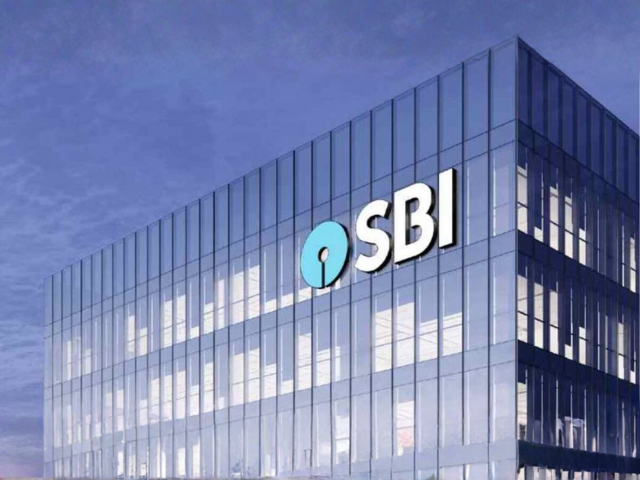


India’s largest public sector bank, State Bank of India (SBI), delivered yet another strong quarter in Q2 FY26, reinforcing its leadership in the banking sector. Despite challenges like deposit cost pressures and intense competition from private peers, SBI showcased remarkable strength in both profitability and operational efficiency.
For investors, this quarter’s performance highlights the bank’s balanced approach to growth, margin stability, and asset quality—three pillars crucial to sustainable returns in the banking sector.
SBI reported a net profit of ₹20,160 crore for Q2 FY26, up from ₹18,331 crore in the same quarter last year—a 10% year-on-year increase, comfortably exceeding CNBC’s estimate of ₹17,048 crore.
The bank’s Net Interest Income (NII) also rose to ₹42,985 crore, compared to ₹41,620 crore in Q2 FY25, showing a steady improvement in core income generation. This growth was largely supported by expanding loan volumes in retail and corporate segments.
The performance reflects SBI’s ability to maintain profitability even amid rising deposit rates, a challenge that has put pressure on margins across the banking sector.
The key to SBI’s sustained profitability lies in its margin management. Despite increasing competition for deposits and the Reserve Bank of India’s tight liquidity stance, the bank maintained stable Net Interest Margins (NIMs).
Its large CASA (Current Account Savings Account) base continues to provide a low-cost funding advantage, while smart repricing of loans has helped offset higher deposit costs. SBI’s strong franchise across India gives it a cost-efficiency edge over private banks that rely more heavily on wholesale deposits.
Another major highlight of SBI’s Q2 FY26 results is the continued improvement in asset quality. Non-performing assets (NPAs) have seen a steady decline, backed by strong recovery and write-back trends.
This improvement underscores the bank’s prudent credit assessment and its focus on secured, diversified lending. Moreover, provisions remained moderate, helping boost profitability. The provision coverage ratio (PCR) continues to stay at a comfortable level, indicating that SBI is well-prepared for any unforeseen stress in the system.
SBI’s digital transformation continues to be one of its strongest growth drivers. The YONO platform—now one of India’s most widely used digital banking apps—has played a vital role in expanding the bank’s customer base, especially among younger and urban demographics.
Over 90% of SBI’s transactions are now digital, which has helped the bank reduce operational costs and enhance efficiency.
Retail loans, particularly home loans, personal loans, and SME credit, grew robustly during the quarter. This aligns with India’s overall economic momentum, supported by rising consumer spending and infrastructure development.
SBI’s Q2 FY26 results place it among the top-performing banks this earnings season. Private sector giants like HDFC Bank and ICICI Bank have also posted healthy numbers, but SBI’s scale, government backing, and rural reach give it a unique edge.
Market experts believe this performance strengthens investor confidence in PSU banks as a whole. The stock remains a long-term value pick for investors seeking stability, consistent dividend payouts, and exposure to India’s economic growth story.
Looking ahead, SBI’s focus will remain on sustaining growth while preserving asset quality. With the economy on a strong footing and credit demand expected to stay high, the bank’s diversified portfolio and digital push will likely drive future earnings.
Analysts expect the bank to continue maintaining NIMs around current levels, while advances growth may outpace the industry average. The bank’s capital adequacy and provision buffers provide further comfort to long-term investors.
1. What is SBI’s Q2 FY26 net profit?
SBI reported a net profit of ₹20,160 crore, up from ₹18,331 crore last year, beating market expectations.
2. How did SBI’s NII perform this quarter?
SBI’s Net Interest Income (NII) rose to ₹42,985 crore, showing healthy growth driven by higher loan volumes.
3. How is SBI managing rising deposit costs?
Through its strong CASA base, strategic loan repricing, and efficient cost management, SBI has kept margins stable.
4. What’s the outlook for SBI’s stock post-results?
With improving asset quality and strong earnings visibility, SBI remains a solid long-term investment choice.
5. How can investors invest in SBI shares?
You can easily invest in SBI and other top banking stocks through Swastika Investmart’s online trading platform.
SBI’s Q2 FY26 results underscore the bank’s strength in balancing growth, profitability, and prudence. Its ability to maintain margins despite rising funding costs, coupled with a focus on digital transformation, positions it as a standout performer in the Indian banking landscape.
For investors, SBI continues to represent a blend of stability and long-term value, benefiting directly from India’s economic expansion and strong credit growth trends.
Start your investing journey with Swastika Investmart — a SEBI-registered, tech-driven brokerage offering research-backed insights, investor education, and dedicated customer support.


Trust Our Expert Picks
for Your Investments!



